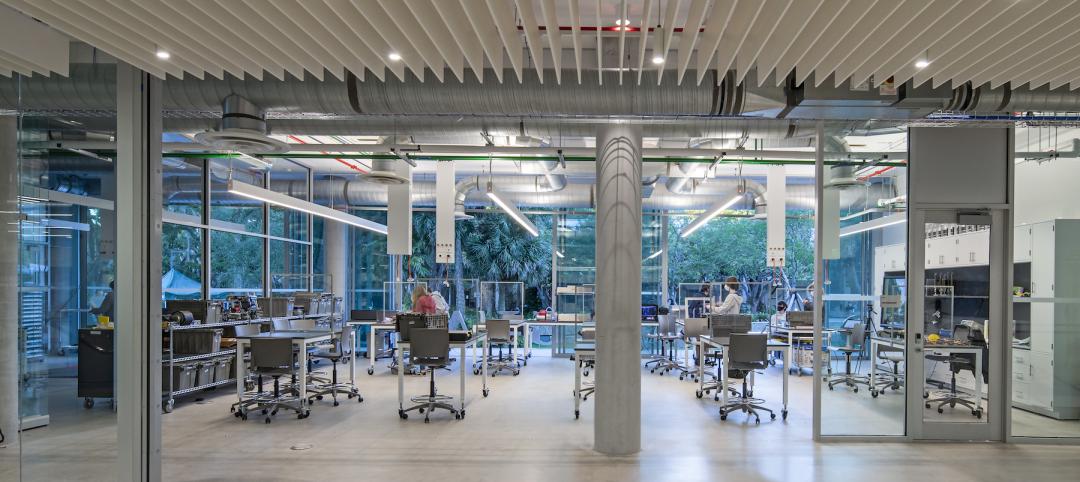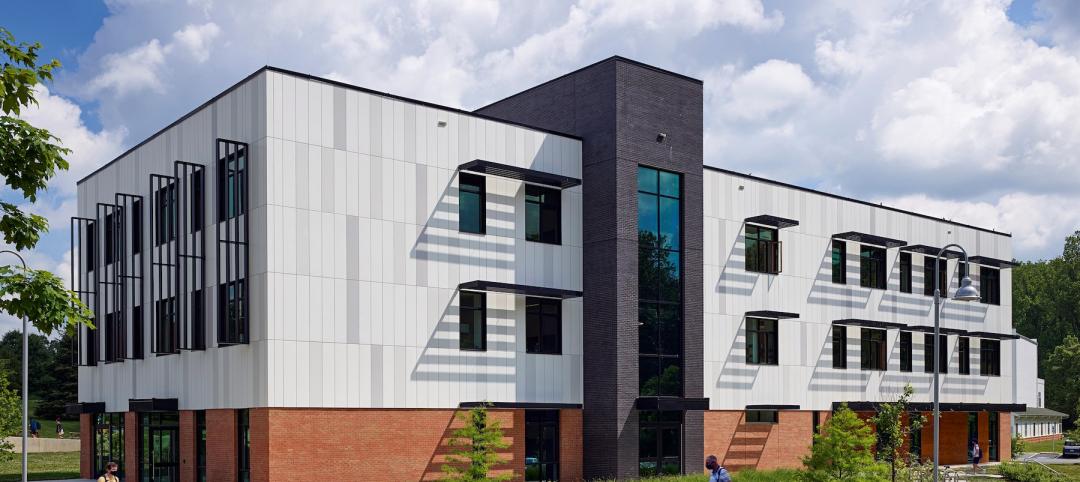The complete findings from our inaugural Giants 300 Technology and Innovation Study will be available soon at BDCnetwork.com/2019TechSurvey. This 12-question survey was emailed to all 486 firms that participated in BD+C’s 2019 Giants 300 Report; 130 firms completed the tech survey, for a participation rate of 26.7%.
The objective of the study was to gain a deeper understanding of the state of AEC technology adoption and innovation initiatives at the nation’s largest architecture, engineering, and construction firms. There are dozens of takeaways from this study, including which tech tools are being used most frequently, and which tools offer the best ROI (see our recap on page 40).
One takeaway that stood out for me was the astonishingly high adoption rate of offsite construction among the general contractors and construction management firms. Of the 35 GCs and CMs that participated in the survey, 25 firms (71.4%) indicated that they use offsite/prefab construction on projects, and, incredibly, nearly half (45.7%, or 16 firms) use offsite construction on “all” or “many” projects.
Of the 10 firms that currently are not implementing offsite construction on projects, three firms are pilot-testing offsite processes and four are considering the approach for future application. That leaves just three firms (8.5%) that indicated they have zero interest in offsite construction—which means we’re looking at an adoption rate of more than 90% among the nation’s largest GCs and CMs.
When asked to pinpoint the single most significant AEC technology innovation their firm has initiated in the past year with positive results, DPR Construction’s National Director of Innovation, Kaushal Diwan, cited the use of multitrade/multiscope prefabrication through its strategic partnership with Phoenix-based prefab provider Digital Building Components: “The ability to take more complex work offsite while other work proceeds, then bring ready-to-install elements to the site is a significant advance in the use of prefabrication. With the existing labor shortage and desire to still have speed-to-market, we think we’re only beginning to see the possibilities.”
Speed, quality, advanced coordination, and schedule gains are commonly cited as benefits of offsite construction. But what about hard-dollar ROI?
“Our current metrics savings show that prefabricating with Digital Building Components offsite saves 10–20% on overall cost,” said Diwan. “It can save time by improving installation efficiency by 20–30%, and it increases quality by reducing rework to less than 1%.”
The caveat, added Diwan, is that these results “are only possible through deep adoption and integration with virtual design and construction and robotics technology, which Digital Building Components uses.”
Related Stories
Market Data | May 18, 2022
Architecture Billings Index moderates slightly, remains strong
For the fifteenth consecutive month architecture firms reported increasing demand for design services in April, according to a new report today from The American Institute of Architects (AIA).
Building Team | May 18, 2022
Bjarke Ingels-designed KING Toronto releases its final set of luxury penthouses
In April 2020, a penthouse at KING Toronto sold for $16 million, the highest condo sale in Toronto that year or the year after.
Building Team | May 17, 2022
MKA’s Embodied Carbon Action Plan will include reporting on carbon reductions for selected projects
Magnusson Klemencic Associates (MKA) recently released its SE 2050 Embodied Carbon Action Plan (ECAP) for 2022.
University Buildings | May 16, 2022
Yale’s newly renovated Schwarzman Center enriches student campus social life
Robert A.M. Stern Architects (RAMSA) recently unveiled the design of their restoration of the Schwarzman Center at Yale University, which includes dining spaces, a bar, and a food shop.
K-12 Schools | May 16, 2022
Private faculty offices are becoming a thing of the past at all levels of education
Perkins & Will’s recent design projects are using the area to encourage collaboration.
Codes and Standards | May 16, 2022
AIA releases Justice in the Built Environment guide
The American Institute of Architects (AIA) recently published a new supplementary edition of the Guides for Equitable Practice, titled “Justice in the Built Environment.”
K-12 Schools | May 16, 2022
A Quaker high school in Maryland is the first in the U.S. to get WELL Gold certification
Designed by Stantec, a Quaker high school is the first in the US to receive WELL Gold certification, which recognizes a commitment to occupants’ health and well-being.
Building Team | May 13, 2022
Glass penthouses rise above Toronto’s tree line
In midtown Toronto, the nine-story midrise building Leaside Common has released its Penthouse Collection: two-floor penthouses that take inspiration from Philip Johnson’s Glass House in Connecticut.
Market Data | May 12, 2022
Monthly construction input prices increase in April
Construction input prices increased 0.8% in April compared to the previous month, according to an Associated Builders and Contractors analysis of U.S. Bureau of Labor Statistics’ Producer Price Index data released today.
Codes and Standards | May 12, 2022
Solar industry creates non-profit to remove barriers to clean energy deployment
The Solar Energy Industries Association (SEIA) is launching a 501(c)3 non-profit organization to accelerate the transition to carbon-free electricity.

















